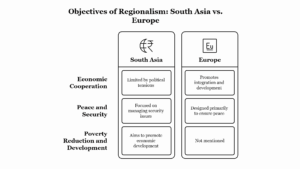The judicial system in Canada is characterized by its independence, impartiality, and commitment to the rule of law. As a democratic country governed by the rule of law, the judicial system ensures that all individuals, regardless of status, are subject to the law. The Canadian judiciary operates within a federal system, reflecting the structure of the Constitution Act of 1867 (formerly the British North America Act, 1867). It is also governed by the Canadian Charter of Rights and Freedoms, which guarantees fundamental rights and freedoms. The judicial system in Canada consists of multiple levels of courts, each with specific functions and jurisdictions, including provincial, territorial, and federal courts.
1.1 Structure of the Judicial System:
Canada’s judicial system is structured hierarchically and is divided into provincial/territorial courts and federal courts. The highest court in Canada is the Supreme Court of Canada (SCC).
- Supreme Court of Canada (SCC): The SCC is the final court of appeal in Canada, and it is the highest authority in interpreting Canadian law. It has the power to hear appeals on a wide range of matters, including constitutional issues, criminal cases, and civil disputes. The SCC consists of nine justices appointed by the Governor General, who serves on the advice of the Prime Minister. The Court’s decisions are final and cannot be appealed.
- Federal Courts: The Federal Court of Canada is a specialized court with jurisdiction over federal matters, such as cases involving immigration, intellectual property, federal taxes, and national security. The Federal Court of Appeal is the appellate division of the Federal Court and hears appeals from the Federal Court and other federal tribunals.
- Provincial and Territorial Courts: Each of Canada’s ten provinces and three territories has its own set of courts that handle the majority of legal cases in the country. These courts have jurisdiction over most criminal, civil, and family matters within their respective provinces or territories. They include provincial superior courts, provincial courts, and family courts. The Provincial Court of Appeal serves as the appellate body in provincial cases.
1.2 Judicial Review and Constitutional Interpretation:
The judicial system in Canada plays a significant role in interpreting and applying the Canadian Constitution. Judicial review allows courts, particularly the Supreme Court of Canada, to determine the constitutionality of laws and government actions. Judicial independence ensures that the judiciary is not subject to political interference, allowing judges to make decisions based solely on the law and the Constitution.
One of the most notable functions of the judicial system is its role in interpreting the Canadian Charter of Rights and Freedoms (1982), which provides protections for individual rights and freedoms, such as freedom of expression, equality rights, and rights of accused persons. Courts can strike down laws that violate the Charter, as seen in landmark cases like R. v. Morgentaler (1988), which decriminalized abortion, and R. v. Oakes (1986), which established the legal framework for determining whether a law violates Charter rights.
1.3 The Role of Judges and Legal Professionals:
Judges in Canada are appointed by the Governor General on the advice of the Prime Minister, but appointments must be made from a pool of qualified candidates, and judges are generally appointed based on merit and experience. Judges in Canada are expected to be impartial, independent, and free from political influence. Their primary responsibility is to interpret the law and render decisions based on legal principles rather than personal biases.
In addition to judges, Canada’s judicial system involves legal professionals such as lawyers and paralegals who represent clients in court, assist with legal research, and advocate on behalf of parties involved in legal disputes.
1.4 Role of the Legal Profession:
The Canadian Bar Association (CBA) is the national professional organization that represents lawyers in Canada. Lawyers in Canada are required to meet specific educational and professional standards before being admitted to the bar. They play a crucial role in the judicial system by representing individuals and organizations in both civil and criminal matters, ensuring that all parties have access to legal counsel.
1.5 Challenges Facing the Judicial System:
Despite its strong foundation, the Canadian judicial system faces challenges such as access to justice issues, backlogs in court cases, and concerns over the cost of legal representation. Moreover, there are discussions surrounding the diversity of the judiciary to ensure that the judicial system reflects the demographic makeup of Canadian society, including increasing representation of women, Indigenous peoples, and racial minorities.
Conclusion:
The judicial system in Canada is a cornerstone of the country’s democracy, ensuring that all individuals are treated equally under the law and that the rights and freedoms guaranteed by the Canadian Charter of Rights and Freedoms are upheld. The Supreme Court of Canada, federal courts, and provincial/territorial courts work together to interpret laws and provide access to justice. Despite facing challenges, the judicial system remains an essential mechanism for legal accountability and the protection of rights in Canada.







Leave a Reply